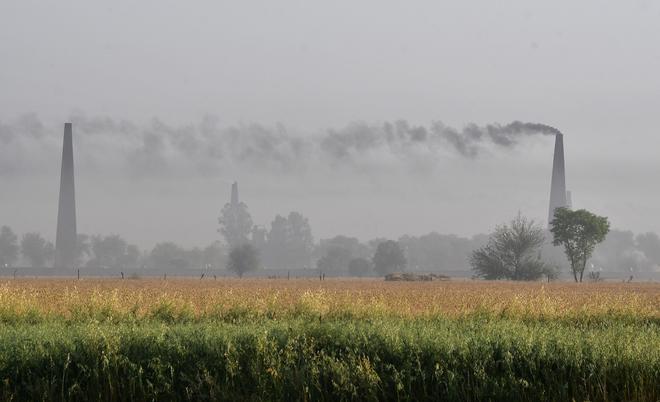Particulate pollution has been increasing in the cities of Rajasthan, which faces a multi-pollutant crisis with the levels of several gaseous pollutants such as nitrogen dioxide and ozone beginning to rise. This has increased public health risk in the State, an analysis report of the Centre for Science and Environment (CSE) has said.
The air quality is worsening in both big and small cities and towns despite the clean air action being taken in the State. The continuing elevated pollution levels among city stations highlight the systemic pollution which persists in the region because of inadequate infrastructure for pollution control across all sectors, according to the report.
Also read | Curbing air pollution in India needs efforts across South Asia: World Bank report
CSE executive director (research and advocacy) Anumita Roychowdhury said while releasing the report in New Delhi on Friday that particulate pollution was on the rise in Jaipur, Kota and Udaipur, where the average 2022 levels had crossed the pre-pandemic levels. Several cities exceed the standards for this category of pollution, while Jodhpur is the most polluted and Kota is the second among the five non-attainment cities in the State. Non-attainment cities are those which have fallen short of the National Ambient Air Quality Standards (NAAQS) for five years.
Ms. Roychowdhury said the ground-level ozone, emerging as a challenge in non-attainment cities, needed more robust monitoring to assess risk. Ground-level ozone, which is highly toxic and can harm even during short duration exposure, requires monitoring to assess its build-up in local situations across the landscape.

On several days in a year, ground-level ozone has started to exceed the eight-hour average standard in all the non-attainment cities, with Jaipur being the most affected. A range of gases, volatile organic compounds, carbon monoxide and other elements emitted from vehicles and industries react with each other in the air under the influence of sunlight to form ozone, the report said.
Also read: Explained | Where do Indian cities stand on toxic air?
The analysis has assessed long-term trends as well as seasonal variations in particulate and gaseous pollution in the State. Nitrogen dioxide pollution, closely linked with traffic flow, is on the rise in Jaipur, Jodhpur and Udaipur, as its level was 24% to 51% higher than was recorded in 2019. The report stated that the nitrogen dioxide level had breached the annual standard in Jaipur in 2022, while Alwar and Kota had shown a stable trend.
“This pollutant requires early and preventive action, as growing motorisation can skew the curve,” Ms. Roychowdhury said. She suggested a State-wide action to improve systems and infrastructure in all the key sectors of pollution, including industry, vehicles and transport, clean energy, management of waste streams, construction and greening.
The report also laid emphasis on the formulation of plans for massive clean energy transition in industry, transport, power plants and households. It said State-wide action should be initiated to scale up electrification of vehicles and promote public transport, walking and cycling, in addition to developing a circular economy.







